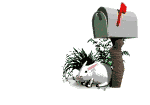|
|
 Positive Discipline
Positive Discipline
Teacher: "No, don't throw the blocks!"
Student: "But we were playing airplanes."
Teacher: "No, don't run inside!"
Student: "But, my new shoes make me run fast. Wanna see?"
Teacher: "No, don't hit your friends!"
Student: "But they hit me first!"
Teacher: "No, don't yell across the room!"
Student: "But we are dinosaurs."
Are you seeing a common word or words used here?
"No" and "Don't" are two of the most commonly used words in the classroom, and at home for that matter.
Wouldn't it be wonderful if you never had to say those two words again? Well in all honesty, you may never
have to!!! Isn't that wonderful news?!?!?!
Think way back to your earliest memories. Do you remember how some teachers made you feel when you did
something wrong? Wasn't a good feeling was it? "No" and "Don't" are being used so much now. When I witness
the reactions on children's faces it saddens me.
Yes, children need to know when they have done something wrong, but we also need to remember very young children have
very fragile self-esteems. But how can we go through an entire day with out using those two words?
The answer is simple, Positive Discipline. Through positive discipline you correct children's actions
without damaging their ever growing self-esteems. Let's take a look again at the scenes above
but this time using positive discipline:
Teacher: "When did our blocks grow wings? Let's try building a castle and see what happens."
Student: "No, let's build a farm!"
Teacher: "Uh-Oh what happened to our walking feet? Where do we use our running feet?"
Student: "Outside. Look at my new shoes! I can run really fast now!"
Teacher: "Those are beautiful new shoes, they sure do look fast! Can you show me how fast you can run outside?"
Teacher: "Why is your friend crying?"
Student: "cuz I hit him."
Teacher: "Why did you hit him?"
Student: "cuz he hit me first."
Teacher: "What kind of hands do we use with our friends?"
Student: "Soft hands."
Teacher: "What happens when we use our hard hands?"
Student: "It hurts."
Teacher: "Are those outside voices I hear?"
Reasoning with children can be done. We just have to put it into language they can understand.
Soft hands vs. hard hands. Walking feet vs. running feet. Inside voices vs. outside voices.
Using rules that children can understand and relate to work best in the classroom.
Now instead of giving you a super long narrative on the do's and don'ts of discipline, I am simply going to give you some of the ideas that I have used in my classroom. If you have any questions about these ideas feel free to email me or post your questions or ideas in the forum.
 Discipline Management Ideas
Discipline Management Ideas
Procedure
Hang the stop lights low enough on a bullitin board or wall so they are accessable to the children.
Every child should start his or her day with a green light. When a child falters in his/her behavior GO TO the child and DISCUSS
quietly the action. Ask the child what color light he/she thinks is deserved. Allow the child to CHANGE THEIR OWN LIGHT.
Note:
I have used this method of discipline with my pre-kindergarten class. After the first two weeks of school my students very rarely
received anything other than a green light. By allowing children to make changes on their own they have more of an understanding that
what they did was innappropriate.
Procedure:
write each child's name on a clothespin.
Create a chart with color strips:
green=great day | white=good day | yellow=moderate day | orange=rough day | red=hard day
Attach each childs clothespin on the green strip.
Hang the chart low enough on a bullitin board or wall so it is accessable to the children. Allow the children to move their
clothespin when necessary.
Procedure:
Draw a happy face on the green side of circle, on red side draw a sad face.
Hang happy/sad faces low enough on a bullitin board or wall so they are accessable to the children. Allow the children to change
the faces when necessary.
Note:
I have found that this idea works best with children under four years of age.
Procedure:
Staple monthly calendar to the inside of folder. Label folder with child's name. Store in child's locker so it is
accessable to both the child and parent.
This is a good idea to accompany any of the ideas above. At the end of each day if the child has not had to make changes to their discipline
chart add a chart sticker for that day. If a change has been made write the problem in that days square.
Procedure:
Place the bear on the chair. When children have to visit the cuddle chair allow them to talk to the bear and tell it their problems.
I received this idea from a seminar I recently attended. I have been using this idea with my three year old class and it works great!!!
Procedure:
You can use this ide for time out or for when a child is feeling sad. Allow the children to visit the sad pad whenever they feel it is necessary.
 Something To Remember
Something To Remember
When we criticize a child we tend to go on and on about the wrong doing. But when it comes to praise, well short
and sweet has always been the way. We, as educators, need to reverse this cycle. You can never praise a child too much,
and always remember a child will remember the lengthy praise for a lifetime!
